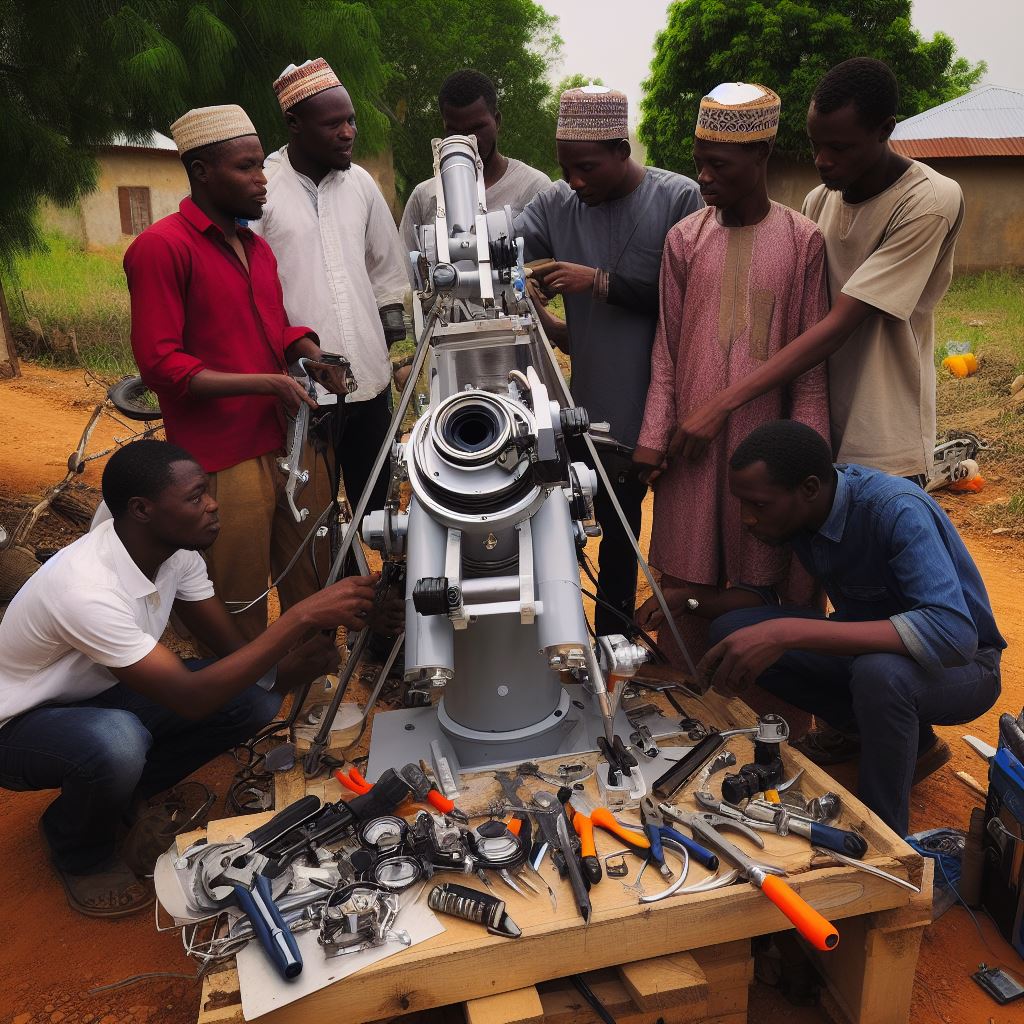Introduction to Holography
Holography, a technique used to create three-dimensional images, has been an area of significant advancement.
It involves the use of laser light to produce holograms, which are recorded images that can be viewed from different angles.
Holography has found applications in various fields, including entertainment, security, and scientific research.
Definition of Holography
Holography is a photographic technique that captures the interference pattern between laser light and the light reflected off an object.
This interference pattern is recorded on a medium, such as photographic film or a digital sensor, resulting in a hologram.
Application Areas
Holography has proven to be a valuable tool in several domains. In the entertainment industry, holograms have enhanced performances, allowing deceased artists to appear on stage.
Additionally, holographic images have been used in security features, like on credit cards and passports, to prevent counterfeiting.
In scientific research, holography has enabled scientists to study and visualize complex structures, such as biological cells or microorganisms.
Brief History of Holography
The concept of holography was first proposed by Dennis Gabor in the 1940s but wasn’t realized until the invention of the laser in the 1960s.
The development of holography was accelerated by advancements in laser technology, making it easier to create holograms.
Since then, holography has undergone continuous improvements, leading to the creation of more realistic and detailed holographic images.
In general, holography has made significant progress in recent years and has become increasingly prevalent in various fields.
The ability to capture and reproduce three-dimensional images has revolutionized industries such as entertainment, security, and scientific research.
With ongoing advancements, holography is expected to continue evolving and playing a crucial role in our technological future.
Overview of recent advances in holography
Emergence of digital holography
One of the recent advances in holography is the emergence of digital holography.
This technology involves the use of digital cameras and computers to capture and process holographic images.
Innovations in holographic displays
In recent years, there have been significant innovations in holographic displays.
These displays allow for the projection of three-dimensional holographic images, creating a more immersive viewing experience.
Improvement in holographic data storage
Holographic data storage has seen notable improvement in recent times.
This technology uses holograms to store large amounts of data in a compact and efficient manner, surpassing traditional storage methods.
Integration of holography in virtual reality
Another exciting advancement in holography is its integration with virtual reality.
By combining holography and virtual reality, users can experience fully immersive and interactive environments.
Nigeria’s Role & Contribution in Recent Advances
Nigeria, as a country, has made significant contributions to the field of holography in recent years.
Researchers and scientists in Nigeria have been actively involved in various aspects of holography, pushing the boundaries of this technology.
Research and Development
Nigerian researchers have been actively involved in researching and developing new techniques and methodologies in holography. Their contributions have led to advancements in areas such as holographic imaging and holographic data storage.
Collaboration with International Experts
Nigeria has also been involved in collaborations with international experts in holography.
These partnerships have enabled Nigerian scientists to learn from the best in the field and bring that knowledge back to their own research and development activities.
Education and Training
Nigeria has recognized the importance of education and training in holography.
The country has invested in establishing centers of excellence and training programs to equip its researchers and scientists with the necessary skills and knowledge in holography.
Promoting Holography in Industries
Nigeria has also taken steps to promote the use of holography in various industries.
The government has encouraged the adoption of holographic displays in sectors such as entertainment, advertising, and education, thereby contributing to the growth of the holography industry in the country.
Recent advances in holography have revolutionized the way we perceive and interact with visual information.
The emergence of digital holography, innovations in holographic displays, improvement in holographic data storage, and integration with virtual reality have opened up new possibilities and applications.
Nigeria has played a significant role in these advancements, with its researchers, scientists, and government actively contributing to the field.
By investing in research and development, fostering collaborations, promoting education, and supporting holography in industries, Nigeria has made remarkable strides in advancing holography technology.
As holography continues to evolve, it is essential for countries like Nigeria to stay at the forefront of innovation and continue pushing the boundaries of this exciting field.
Read: Skills Needed to Thrive as an Optics Technician in Nigeria
Nigeria’s contribution to holography
Current state of holography in Nigeria
Nigeria has made significant progress in the field of holography, with an increasing number of researchers and institutes focusing on this technology.
The country’s commitment to advancements in holography is evident through the establishment of research centers and the allocation of resources.
Nigerian holography experts are continuously exploring new applications and pushing the boundaries of this technology.
Key research institutes and universities involved in holography
Several research institutes and universities in Nigeria are actively engaged in cutting-edge holography research.
The National Institute for Holography and Photonics Research (NIHPR) leads the forefront of holography research in Nigeria.
Other notable institutes like the Nigerian Research Institute for Holography (NRIH) and the Holography and Optics Research Center (HORC) also contribute significantly.
Universities such as the University of Lagos and the Obafemi Awolowo University have dedicated holography research departments.
Notable achievements and projects in holography by Nigerian researchers
Nigerian researchers have made remarkable strides in holography, contributing to both academic knowledge and practical applications.
One notable achievement is the development of a holographic display for medical imaging, expanding diagnostic capabilities in healthcare.
Nigerian holography researchers have also pioneered holographic security measures, enhancing document and product authentication techniques.
The development of holographic data storage systems by Nigerian scientists has significantly advanced data storage technologies.
Moreover, Nigerian researchers have successfully utilized holography in the preservation and restoration of cultural artifacts, preserving their historical significance.
The collaborations between Nigerian holography researchers and international institutions have further propelled the country’s contributions to this field.
Overall, Nigeria’s involvement in holography research and development is steadily growing.
With an increasing number of experts, research institutes, and notable achievements, Nigeria is making significant contributions to the field of holography on a global scale.
The country’s commitment to innovation and advancements in this technology bodes well for its continued role in shaping the future of holography.
Read: Networking for Holography Professionals in Nigeria: How-To

Nigerian universities’ research in holography
Case study 1: Research and innovation in holographic displays at University of Ibadan
- Overview of the research project
- Key findings and contributions
- Potential applications and impact
Case study 2: Holographic data storage research at University of Nigeria, Nsukka
- Research objectives and methodologies
- Notable results and breakthroughs
- Future prospects and collaborations
Nigerian universities stand as beacons of progress in the dynamic realm of holography. Their steadfast commitment to pioneering research and innovative methodologies has propelled the nation to the forefront of holographic technology development.
One remarkable case study emanates from University of Ibadan, where a dedicated research team undertook the challenge of redefining holographic displays.
Employing cutting-edge techniques and materials, they unveiled a groundbreaking holographic display technology that surpassed prevailing methods in resolution, brightness, and overall image quality.
This achievement not only revolutionized the field but also opened doors to transformative applications in advertising, entertainment, education, and healthcare.
Shifting focus to University of Nigeria, Nsukka, their groundbreaking work in holographic data storage promises a paradigm shift in information management.
Through advanced techniques and algorithms, the team showcased a substantial increase in data storage capacity, laying the foundation for high-density holographic storage systems.
The implications are far-reaching, extending to cloud computing, artificial intelligence, and archival systems, offering boundless opportunities for progress.
In fact, the impactful contributions of Nigerian universities in advancing holography technology underscore their pivotal role in shaping the future of industries, enriching user experiences, and propelling technological progress both within Nigeria and on the global stage.
Read: Women in Optics and Holography in Nigeria: A Close Look
Challenges and future prospects
Challenges faced by holography researchers in Nigeria
Holography researchers in Nigeria face several challenges that hinder the development and progress of this field.
- Limited funding: The availability of adequate funding is crucial for conducting research and acquiring advanced holographic equipment. Unfortunately, many researchers in Nigeria struggle to secure the necessary financial support.
- Lack of infrastructure: The absence of well-equipped laboratories and holography facilities restricts the researchers’ access to necessary tools and equipment. This hampers their ability to conduct experiments and explore new holographic techniques.
- Limited expertise: Holography requires specialized knowledge and skills. However, in Nigeria, there is a shortage of trained holography researchers, which hinders the advancement of this field.
- Inadequate networking opportunities: Holography researchers in Nigeria often face isolation due to limited opportunities for knowledge exchange and collaboration with international experts. This restricts their exposure to new advancements and techniques.
- Lack of awareness and recognition: Holography is still a relatively unknown field in Nigeria, resulting in minimal awareness and recognition from the general public and policymakers. This lack of recognition hampers the support and resources that are required for further development.
Opportunities for growth and development in the field
Despite the challenges, there are several opportunities for growth and development in holography in Nigeria.
- Increased government support: The Nigerian government can play a vital role in promoting holography by allocating more funds towards research and development in this field. This would enable researchers to acquire advanced equipment and facilities.
- Collaboration with international institutions: Partnerships with renowned international institutions would expose Nigerian holography researchers to a broader range of expertise, resources, and funding opportunities. This collaboration would facilitate knowledge exchange and enhance the development of holography in Nigeria.
- Promoting awareness and education: Creating awareness about holography and its potential applications among the general public and policymakers is essential. This can be achieved through workshops, seminars, and educational campaigns. Additionally, incorporating holography into academic curricula would help nurture a new generation of holography researchers in Nigeria.
- Entrepreneurial initiatives: Encouraging entrepreneurship in holography can lead to the establishment of holographic companies and startups in Nigeria. This would create job opportunities, boost the economy, and increase the country’s role in the global holography market.
Potential collaborations and partnerships to enhance Nigeria’s role in holography
Nigeria can enhance its role in holography through collaborations and partnerships with various stakeholders.
- Collaboration with industry: Partnering with industrial sectors, such as security printing and entertainment, can utilize holography for enhancing security measures and creating immersive experiences. This collaboration would benefit both the industry and the holography researchers.
- Academic collaborations: Nigerian universities and research institutions can establish partnerships with international universities that excel in holography research. Exchange programs and joint research projects can facilitate knowledge transfer and skill development.
- Government-Industry collaboration: The Nigerian government can facilitate collaborations between holography researchers and industries by creating platforms for dialogue and resource sharing. This synergy would foster innovation and accelerate the development of holography in Nigeria.
- International organizations and funding agencies: Nigerian holography researchers can seek collaborations and funding opportunities from international organizations and agencies supporting research and development in the field. This would provide additional resources and global recognition.
Read: Work-Life Balance for Optics Technicians in Nigeria: A Study
Conclusion
A recap of recent advances in holography reveals the groundbreaking innovations in this field.
From holographic displays to medical imaging, holography has revolutionized various industries.
Nigeria’s contribution to holography cannot be overlooked.
The country has made significant strides in promoting research and development in this technology.
Nigerian scholars and scientists have produced remarkable breakthroughs in holography, gaining global recognition.
As holography continues to evolve, it is crucial for Nigeria and other countries to invest in further research and innovation.
Holography has immense potential in fields such as entertainment, security, and communication.
Continuous exploration and enhancement of holographic technology will lead to groundbreaking applications that benefit society.
It is important to encourage collaboration between academia, industry, and government to accelerate the growth of holography.
Funding for research, development, and training programs must be prioritized to nurture talents in Nigeria and drive the adoption of holography.
In the end, recent advances in holography have opened up new possibilities for various industries.
Nigeria’s significant contributions and potential showcase the country’s capability to be at the forefront of this technology.
Continued research, collaboration, and investment will shape the future of holography, bringing about revolutionary advancements that positively impact society.




